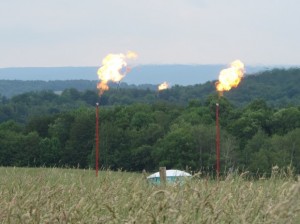Do not disturb: what can drillers do with new forest leases?
-
Marie Cusick
The Corbett administration is preparing to lease approximately 25,000 acres of public park and forest land to raise $75 million for this year’s budget.
Last month, Corbett issued an executive order overturning a 2010 state moratorium on new oil and gas leasing of public land. The administration has called it a restrictive approach to expanding drilling that will not create new surface disturbances.
So what exactly does that mean?
The state Department of Conservation and Natural Resources (DCNR) defines surface disturbance as, “the long-term conversion of forest to a non-forest use.” In other words, cutting down trees and moving earth.
Corbett’s executive order allows companies to work underground– extracting gas horizontally from wells located on adjacent private land or in areas of state forests where leases already exist.
DCNR is seeking $3,000 per acre in upfront bonus payments, plus an 18 percent royalty on gas production. The department hasn’t revealed the specific tracts of land it hopes to lease, but it does have a list of nominations.
DCNR’s Deputy Secretary for Parks and Forests, Dan Devlin, testified in court earlier this month about what the administration does and does not consider a “surface disturbance.”
The following list of examples is based on his testimony and information released by DCNR. It’s not comprehensive. Neither the department nor the governor’s office would answer questions about the executive order.
Examples of surface disturbance:
- New road
- Expanding the footprint of an existing road
- New wellpad. However a new wellpad could be built on a previously leased tract to service both the old and new lease
- New pipeline
- New compressor station
Examples of things not considered a surface disturbance:
- Seismic testing (“It depends which kind of seismic testing,” Devlin said. He added it’s “probably not” considered a surface disturbance)
- Traffic/moving equipment
- Noise
- Light
- Air pollution
- New gas well on an existing pad

















